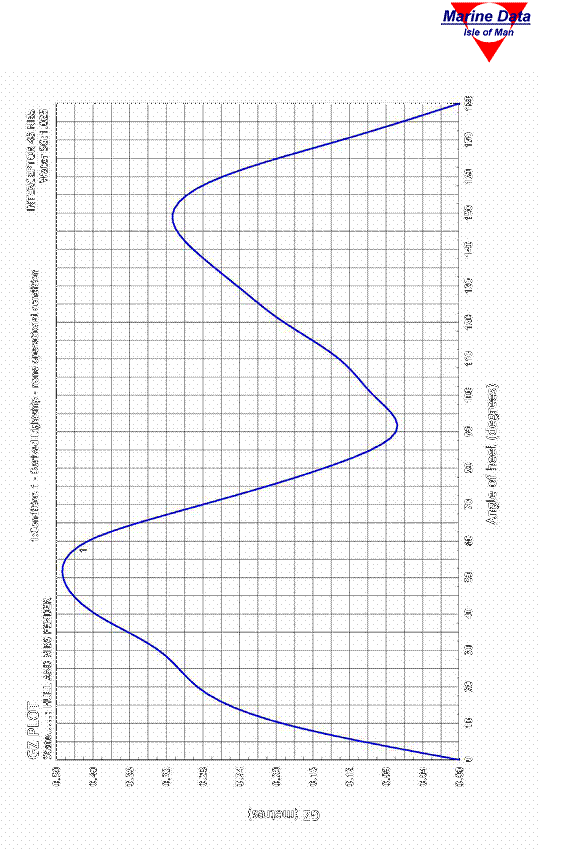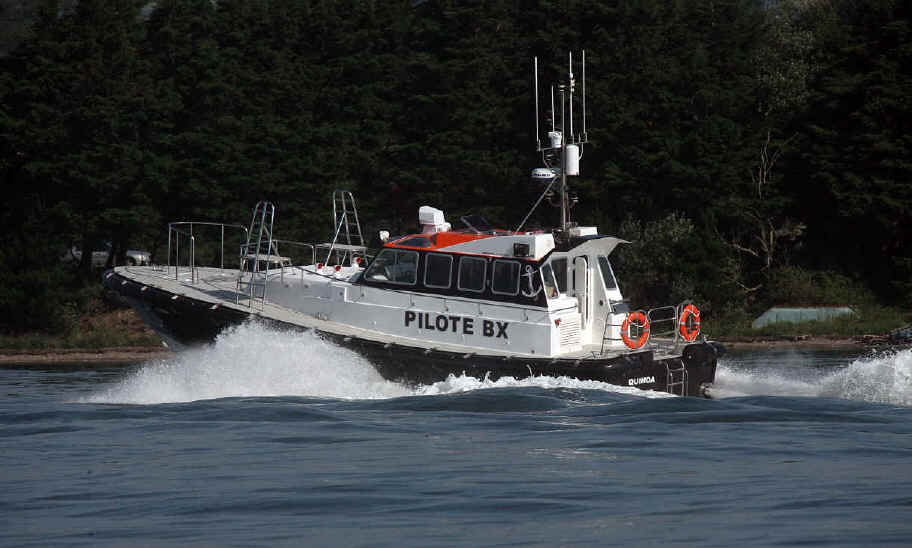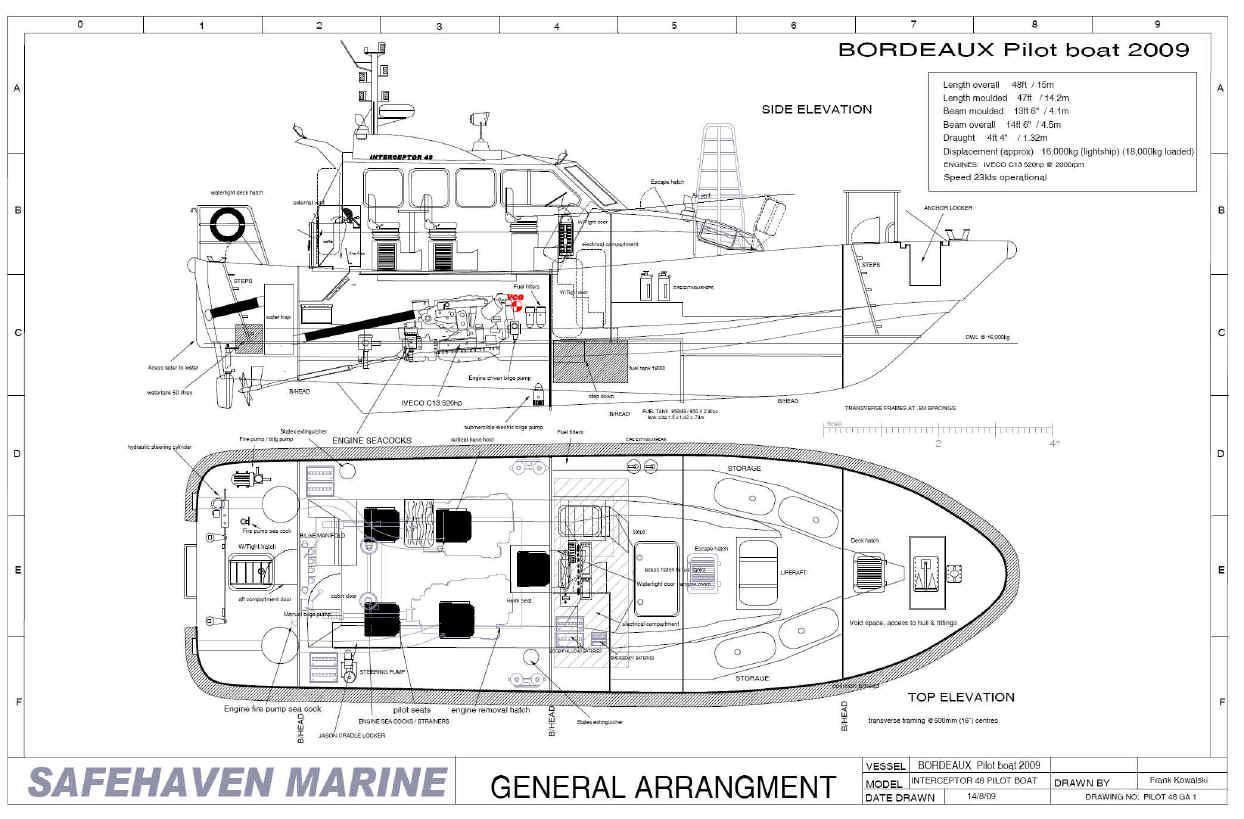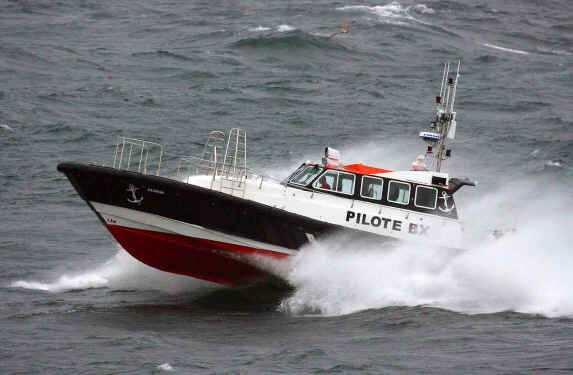
INTERCEPTOR 48 / 14.7m PILOT '
Introduced in 2010, the 48 has proved very successful with pilot vessels supplied to Bordeaux, Liverpool and Malta, and Cork in build.

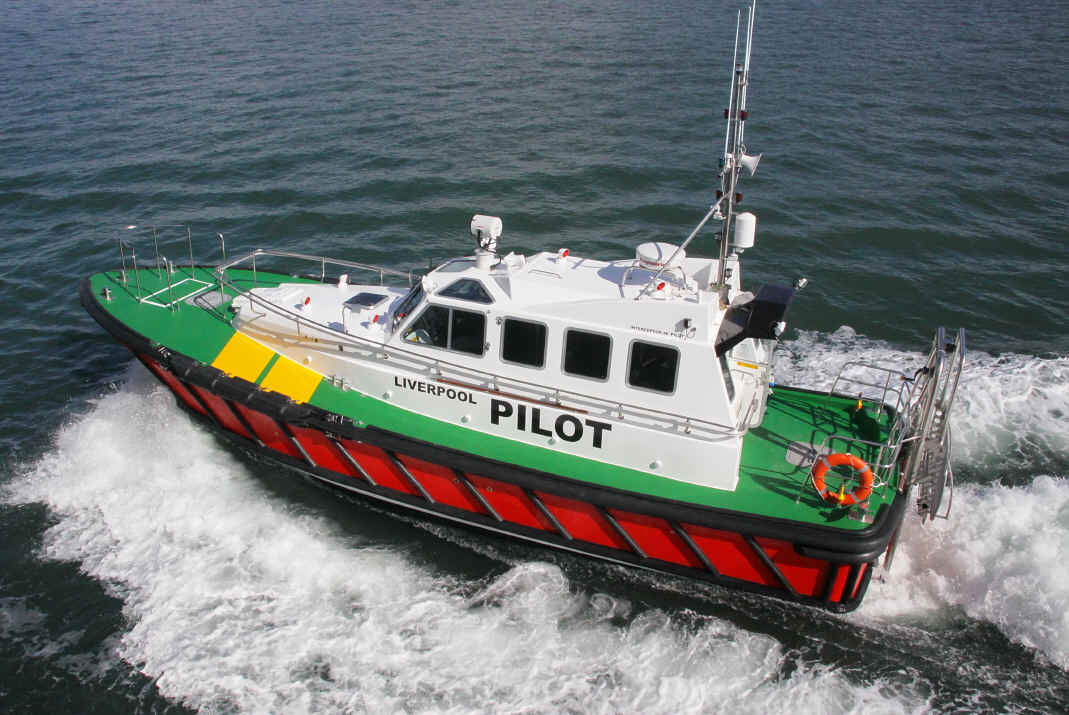
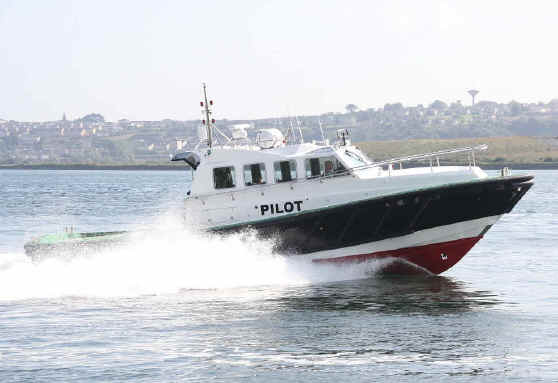
In 2010 we introduced a new 48ft (14.5m) model to fit between our current Interceptor 42 and 55. Based on the 42 hull but modified with a wider deck beam and more rounded transom. To accept alternative modern fendering solutions she differs in having a larger 300mm flat gunwale face which will allow modern fendering alternatives such as OCEAN 3 favored and proven in hard use by the French pilots. A second alternative is the Trellborg fender system utilizing medium density rubber coated fender recessed to receive, an abrasive resistant hard plastic tube tensioned by a steel wire running through it. The system is fully proven in use by several UK authorities. Also the Hippo Marine solution utilizing again a large but lightweight, medium density foam core with a rubberized skin. However the 48 is also be able to be produced with the universally popular traditional delta section and incorporate our well proven sacrificial fender solution. The new model has a higher sheerline at the bow, a more rounded deck at the bow, as on the 55 and has a sleek aft sloping front window cabin design.
The 48 will be capable of similar operational speeds as the 42 with the same power output due to its greater planning area which will compensate for the heavier displacement.
The first Interceptor 48 for the French Port of Bordeaux's new pilot vessel.
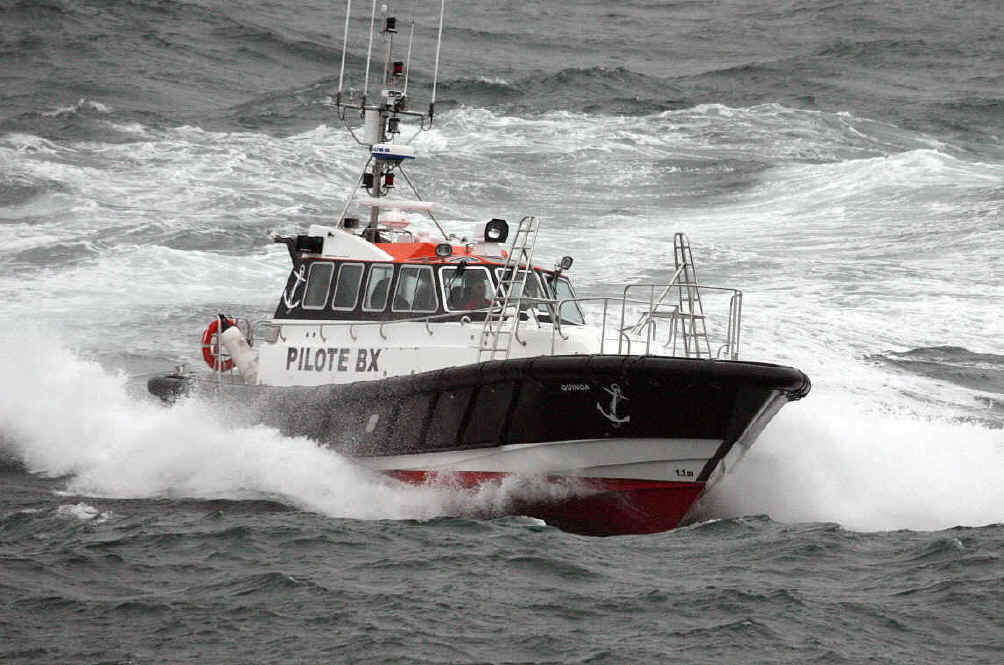
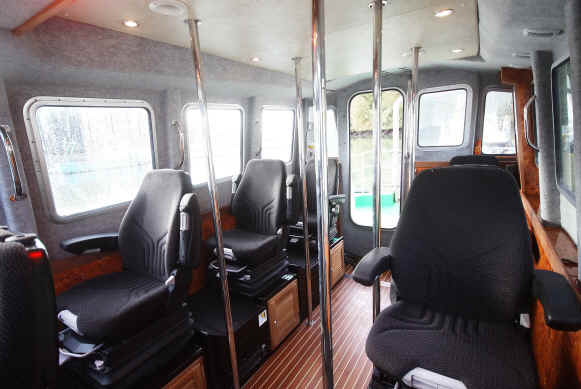
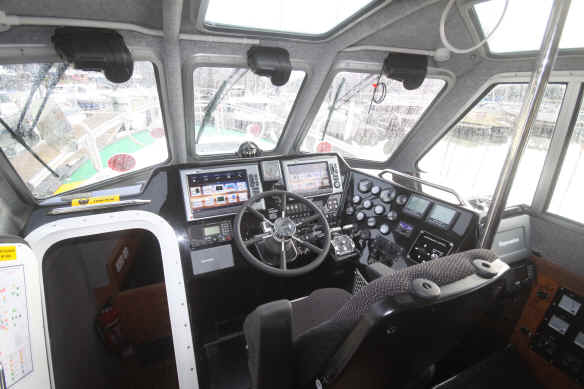
Changes to the original 42 design were kept to subtle improvements that retain the Interceptor 42's excellent sea keeping, but incorporate some refinements. Rake of her stem is reduced by two degrees, visually unnoticeable but keeping LOA down. Her moulded length is 14.2m as opposed to the 42's 12.9m , and her L.O.A. will be 14.7m. Her main chine rises 150mm higher which will soften her ride and allow a lower running trim achievable with the trim tabs, but keep spray suppression constant at lower trim levels. Her beam at deck edge has been increased from 3.9m to 4.2m at the shoulders and reduced slightly at the transom. Her height and depth is identical to the 42 which will retain a similar VCG (most important) and result in a sleeker design. Overall deadrise and hull form design are the same, but a slightly sharper forefoot (55 degrees as opposed to the 42's 52 degrees) will soften her ride in short choppy seas,. One design feature is the incorporation of integral trim plates built into underneath of the hull at the transom. This allows the fitting of large trim tabs that will not protrude past the transom, thereby providing protection for them, but allow drastic running trim adjustments for head sea work by depressing the bow. Similar speed (slightly higher) and powering requirements to the 42 are achieved.
Her bow is rounded, which allows the main fender to be wrapped around in a continuous run. The gunwale flat area is 300mm as opposed to 150mm, obviously this will allow incorporation of larger different fender solutions, but where traditional delta section is chosen, which will still be an option, it will allow for a double run at the stem and transom quarters, protecting the hull further. Also the rounded bow is ascetically very pleasing. She has a slightly increased stern overhang to allow increased protection of the rudders under the hull. Her transom quarters have been rounded off to a much greater extent allowing a continuous run to wrap around and the curve strengthens the area. A slight curve is incorporated for ascetic reasons and adds to her graceful design. This compliments the 42's 'seagull wing' sheer line which is retained, differing only at the bow, which has been raised to run straight without the reverse sheer (as on the 55) this will improve the likelihood of shipping green seas further.
In all the 48 retains all the 42's excellent seakeeping characteristics and graceful design, but offer slight improvements everywhere.
Also available as a patrol / crew transfer version with a cab forward design as seen below. This is 'Foxtrot' built for Malta in 2011
Seating capacity for up to 12 passengers is possible.
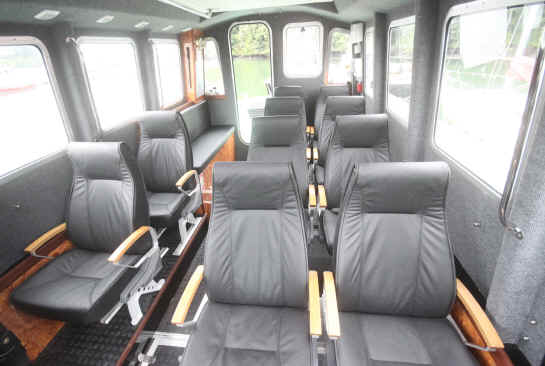
Below 'Skua' built for the Port of Liverpool, UK in 2011
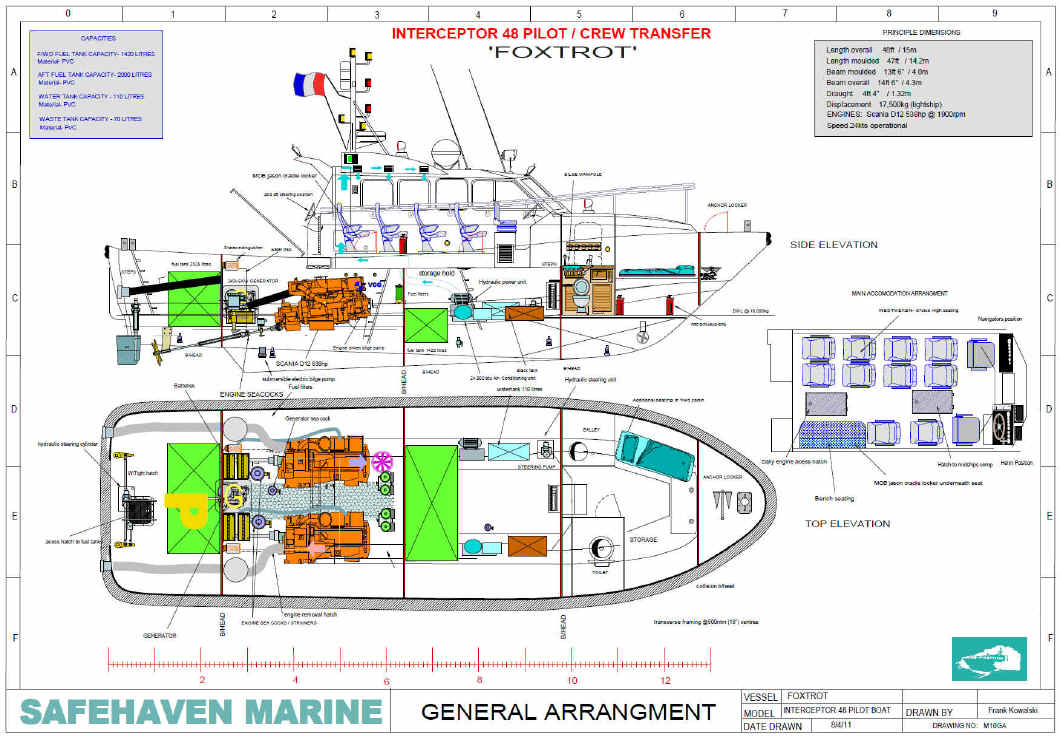
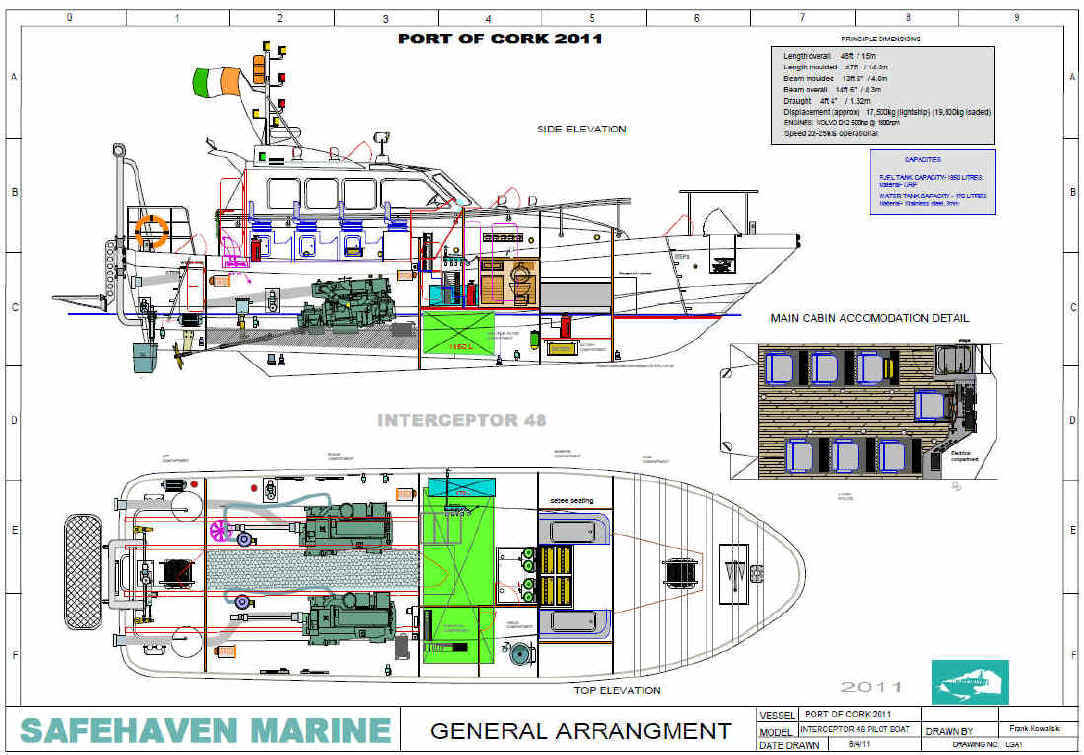
SELF RIGHTING OPTION
From the outset, an important part of the design criteria for the Bordeaux Interceptor 48 pilot, was that the vessel to be inherently self righting. This would be achieved as a result of the superstructure designs size and buoyancy, preventing the vessel from staying in an inverted position after capsize by a breaking sea. The superstructure is of a size large enough, with enough internal volume to automatically right the vessel.
Obviously there are a number of other factors affecting the self righting capabilities of a vessel, and the Interceptor 48 pilot boat incorporates a number of additional design features to achieve self righting. These are:
Window design. The windows of the Interceptor Pilot have been deliberately kept as small as practical without affecting visibility in order to reduce the likelihood of a window been shattered by the force of water. The standard windows are 10mm toughened glass and in all likelihood would survive an inversion, but for full self righting capabilities the glass would be required to be of a stronger thicker design.
In addition the two front side windows are not of an opening design.
Aft cabin door. The aft cabin door on the Interceptor Pilot is designed to be fully watertight, The is of a watertight design to prevent flooding in inversion for the vessel to be fully self righting.
Engine room Air Intakes. The design of the engine room air intakes incorporate anti flooding features to prevent flooding of the engine room in the event of a capsize. The design features a weight and float system on the air intakes that would shut the intake when the vessel was inverted.
Inclinometer switch incorporated to the engine management system that would automatically shut the engines off if the vessels angle of heel exceeds 90 degrees.
Cabin ventilation. All cabin ventilators are of a design that facilitate automatic closure in the event of operating in dangerous conditions. In addition the main cabin ventilation system is of a design similar to the engine room anti flooding design to prevent water entering the main accommodation area in the event of capsize.
Throughout the vessel special attention and modifications are incorporated to ensure that all fixtures and fittings are strong enough to survive and remain operational in a prolonged, inverted 180 degree position.
Below:
The floatation line of the
Interceptor 42 Pilot in its inverted position is shown below. As can be seen,
the size and buoyancy of the cabin prevents the vessel from being stable
inverted.
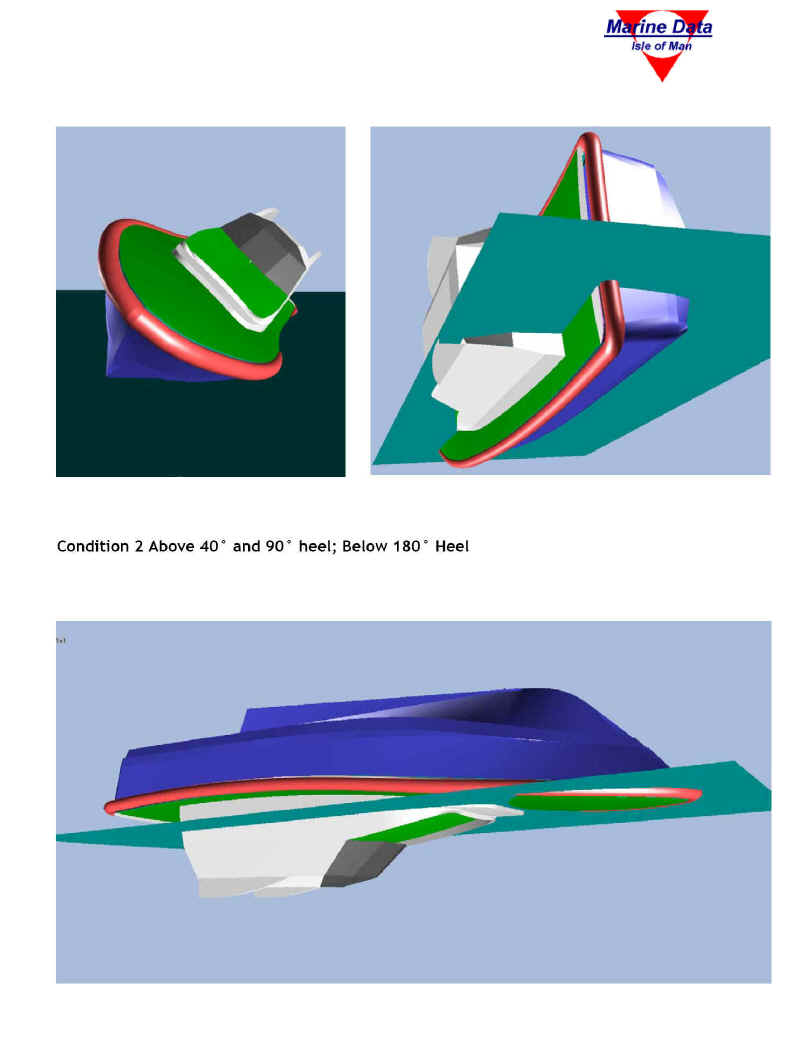
Below-
The large heel angle stability graph shows that at no pint in 180 degrees of
heel does the stability become negative.
